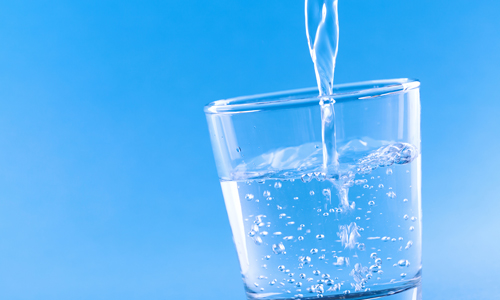How to Maintain Your Reverse Osmosis System
Every week, your family relies on your reverse osmosis system to supply you with water that is clean and safe to drink. Whether you have municipal water or a private well, it’s important to understand the signs that your filter might need to be changed or repaired. At Atlantic Blue Water Services, we work with many homeowners who need help monitoring their reverse osmosis system performance. Without taking the proper care of your system and replacing the filters at key times, you might end up with water that is not as clean as it should be.

How Does a Reverse Osmosis System Work?
Before you can understand the indicators that there are issues with your reverse osmosis system performance, you need to understand how the reverse osmosis system works. Reverse osmosis systems take unfiltered water and pass it through a semipermeable membrane using pressure. There are multiple filters within your system that all serve different purposes. Depending on the system that you use, yours might have three, four or five stages of filtration. The filters in your system might include:
- Sediment filter: This is the filter that removes bigger particles from the water, and it primarily gets rid of things like rust, dirt, dust or debris that is in the water
- Carbon filter: The carbon filter does a great job at removing things like volatile organic compounds (VOCs), contaminants, chlorine and other chemicals from the water that can lead to an off-putting smell or taste
- Semi-permeable membrane: This is the most precise part of a reverse osmosis system, and it can remove up to 98% of total dissolved solids from the water
All of the filters have different lifespans before they need to be changed, and the semi-permeable membrane is the most critical to the success of your reverse osmosis system. When Atlantic Blue Water Services installs your new reverse osmosis system, we can also help walk you through the maintenance and cleaning processes to ensure the longevity of your system.
4 Tips for Monitoring Your Reverse Osmosis System Performance
Total Dissolved Solids (TDS):
One of the best ways to monitor the performance of your reverse osmosis system is using a TDS meter. This affordable meter should be placed into a glass of water that has been filtered through your reverse osmosis system. When your system filters water, it will gradually allow more contaminants into the filtered water as the filters age and need to be replaced. Because it’s so hard to detect a change in odor or color due to the gradual change, a TDS meter will give you a reliable look at exactly what is in your water. It’s a good idea to measure your water soon after replacing the filters or installing it so that you have a control number and can tell when it changes over time. When readings are consistently high despite replacing the prefilters, it’s a sign that you need to replace the reverse osmosis membrane.
Follow the Filter Schedule:
Following the filter replacement schedule carefully is a key component of maintaining your system and monitoring your reverse osmosis system performance. Your reverse osmosis system might have three, four or five phases of filtration, so it is important to understand what filters are inside and how often they should be replaced.
The sediment filter needs to be replaced every 12 months, and if you fail to change it on time you might have dirt come into contact with the membrane and need to replace multiple filters prematurely. Caring for each filter helps to protect your investment in the entire system.
The carbon filter should be replaced every 6-12 months depending on the quality of the water going into the system.
The reverse osmosis membrane should be replaced every two to three years depending on the maintenance of the rest of the system.
If you aren’t sure when it’s time to replace your filters, the team at Atlantic Blue Water Services can assess your system and help you choose the right filters for it. We can also help you in creating a schedule for replacement so that you never need to worry about whether or not your water is being thoroughly filtered.
Clean It Once a Year:
When you change your filters, it’s a good idea to also thoroughly sanitize and clean your system. You can do this yourself once a year by following the instructions in the owner’s manual, or you can work with a professional who can do it for you. The process can be intensive, so you should make sure that you set aside enough time to do it right. By cleaning and sanitizing your system, you will ensure that there is optimal performance and that the system, and that your system remains in the best possible condition.
Maintain Your Other Water Treatment Systems:
Reverse osmosis systems can remove some contaminants and take care of some water quality issues, but they cannot take care of everything. To get the most out of your reverse osmosis system performance, ensure that your other systems are being cared for as well. For example, reverse osmosis systems are not designed to treat water hardness. They can remove certain minerals, but a high level of hardness can only successfully be treated with a water softener. Because calcium and magnesium are difficult for reverse osmosis systems to remove, they can clog the system up and lead to damage. Taking care of the entire system of water treatment solutions you are using is key to ensuring the success of the filtration processes.
Call Atlantic Blue Water Services
Atlantic Blue Water Services is here to help homeowners, home sellers, home buyers and business owners in need of a quality water test in Pikesville, MD. Call us today to schedule your water testing at 410-840-2583.
